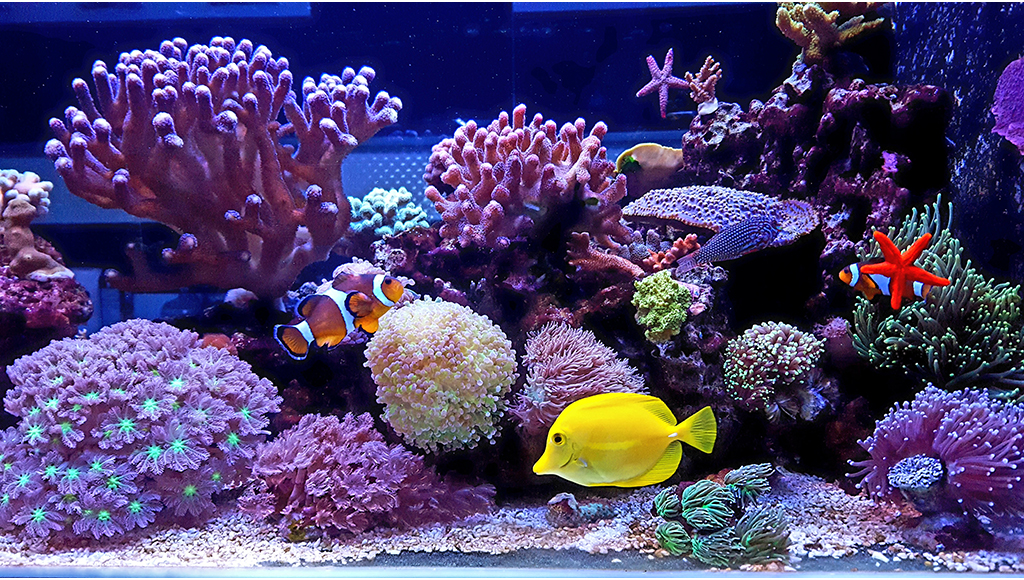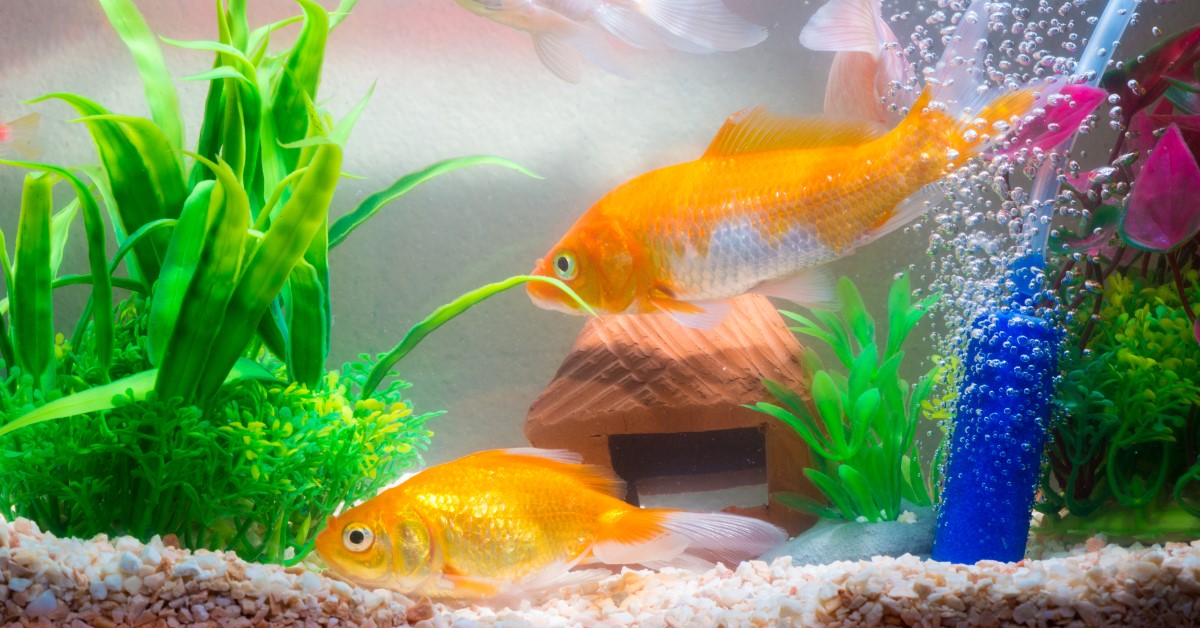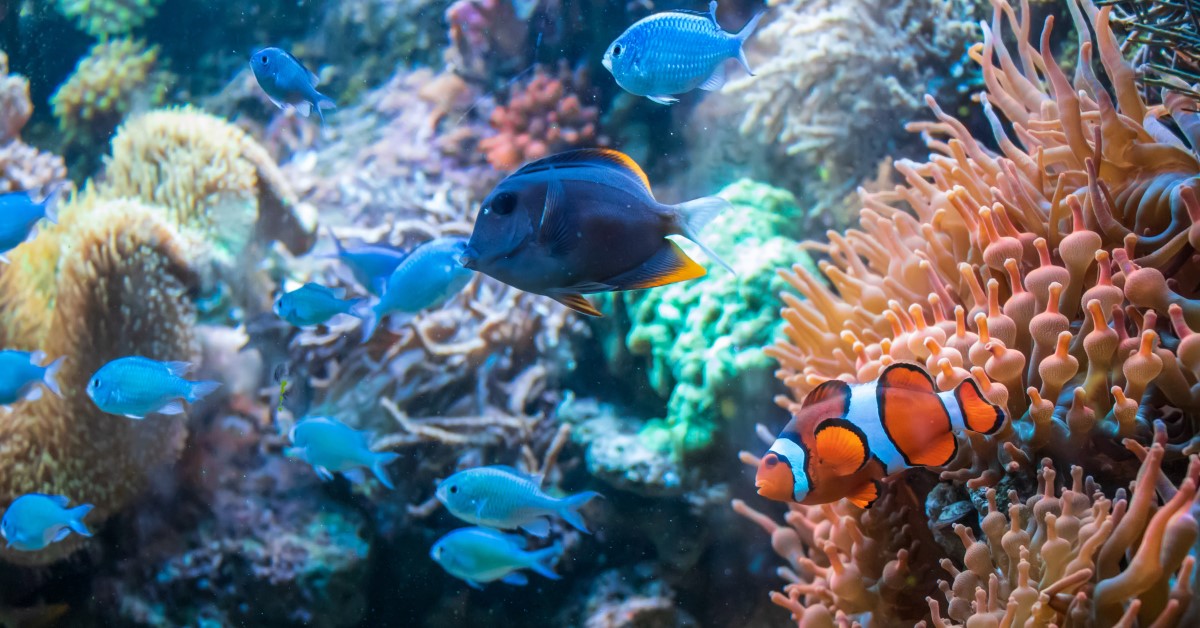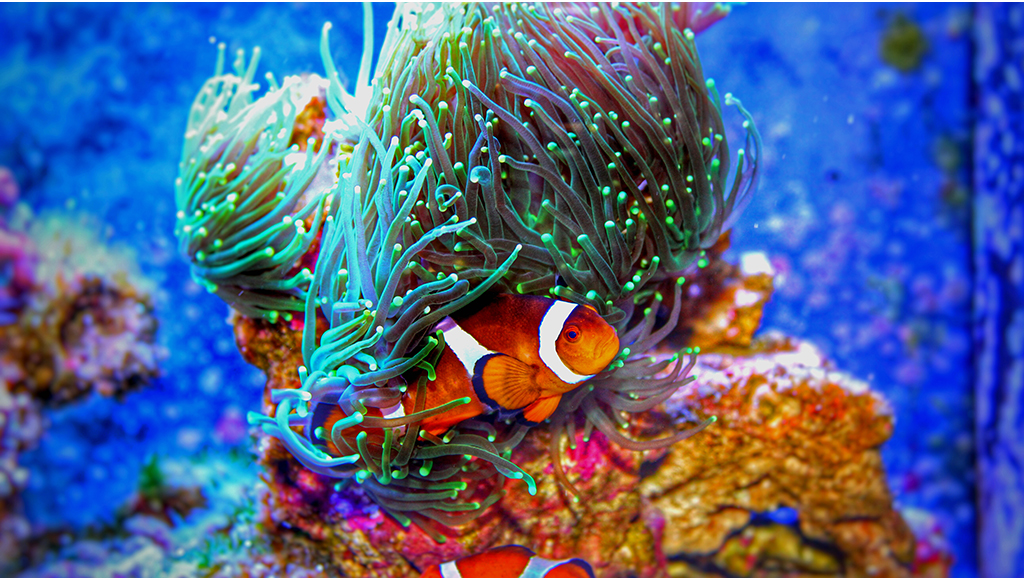Saltwater Aquarium: Setup Guide and Tips
A lot of planning and work is needed before you start, but the reward can be beautiful.

Freshwater fish tanks are beautiful and require a good deal of work to maintain. Saltwater tanks are every bit as beautiful as freshwater tanks, but a little trickier to start and maintain and require a bit more work. You will also notice, once you visit your local pet store, that saltwater fish are more expensive than the freshwater varieties. Cost alone, should be well-considered before you begin this saltwater hobby. It’s one thing when your $3 goldfish dies, but when your $35 or $100 saltwater fish goes belly up, you may be hesitant to invest in a replacement.
A properly set up and maintained saltwater aquarium can cost hundreds of dollars, not including the monthly operating costs. This doesn’t mean that you can’t have a small, inexpensive, successful fish tank. However for most people, if you are not willing to invest the time and money required to do it properly, then its best that you not undertake this beautiful and costly aquatic hobby.
There is a lot of planning and maintenance needed to maintain a saltwater aquarium, however they can be fascinating to watch and a great source of joy as you watch its inhabitants thrive. If you are not intimidated by the costs or the amount of work required with a saltwater aquarium, then you just might be ready to take a step forward into an exciting, educational and rewarding hobby.
Once you’ve made the decision to invest in this exciting and satisfying hobby, the first thing to remember is that the success of your new saltwater tank will depend greatly on your thorough understanding of your system’s equipment, your knowledge of your inhabitants and most importantly the amount of attention you devote to it.
Whether setting up a new aquarium, converting an existing tank from fresh to saltwater, or upgrading from a fish-only to a reef tank, it is important to plan ahead "before" you begin. Research the many system design options available, what equipment and supplies are needed for each, and then begin putting your new system together.
Below is a list of the very basic components needed to setup a basic saltwater tank:
- Tank
- Stand
- Canopy (cover for tank)
- Filtration system
- Protein skimmer
- Backup power supply
- Substrate (gravel)
- Lights
TANK AND STAND
It is best to go as large as the area you plan on placing the tank will accommodate, as size does add a significant benefit of stability. The greater the volume the longer it takes to alter it. This applies to many things, mainly water quality and temperature.
It is recommended that a beginner saltwater fish tank not be smaller than 55-60 gallons. The two main reasons are:
- The lack of stability in a small tank (changes too fast), and the cost to set up a smaller tank with the proper equipment.
- Livestock costs nearly as much as for a smaller tank than it does for the larger tank, so there is no savings in cost.
One other thing to consider is the fact that you may not be as successful with a smaller tank; therefore you would not pursue this hobby further, graduating to the larger tank. It is actually easier to be successful with the larger tank, so beginning this way will likely encourage you to continue with this hobby, rather than abandon it because of early failure.
Tanks come in many sizes, shapes and types of materials. Most Fish Shops will carry a line of standard size tanks ranging from 10 gallons up to 100 gallons, in shapes from rectangular, square, hexagon to oblong. Tanks in the past used to made from Glass, but Acrylic tanks now seem to be the trend. Acrylic tanks bond the corners with solvent rather than silicone which gives them stronger joints. Glass tanks are easier to clean because the algae that can grow in a reef tank is harder to remove from acrylic. Acrylic tanks can also scratch very easily; however you can polish out the scratches, where in a glass tank you cannot. Your choice of tank will simply be preference.
The stand should be sturdy enough to hold the heavy weight of your “filled” tank and all it’s equipment. The stand should not wobble, or be placed in an area where it can be bumped. Wood stands are sturdy, but beware they may come in contact with spilled water when feeding fish, or cleaning the tank.
FILTERING SYSTEM
The two most commonly used methods of filtration used in a marine aquarium are the “under-gravel in combination with a canister filter” and the “external wet/dry trickle filters”.
Under-gravel and canister filters have been around for 30 years. They work quite well and are installed quite easily. Canister Filters have evolved over the years to become much more than a simple mechanical filter. Many of these filters now incorporate mechanical, biological and chemical filters all in one neat package. Simple and efficient, a single canister filter unit can quickly solve all of your filtration needs.
Wet/dry trickle filters may be more complicated in their plumbing needs but they offer much greater effectiveness in their ability. Wet/Dry or "Trickle" Filters are simple devices which process ammonia and nitrites increasing the DO (Dissolved Oxygen) content in tank water. These filters are popular with saltwater aquarists and are easy to install.
In all aquariums various organic compounds, proteins and enzymes tend to collect at the surface of the water. These compounds form a skin which inhibits the exchange of gases such as carbon dioxide and oxygen from transferring between the water and the atmosphere. An Overflow system is a box or pipe placed in the corner or middle of the back of the aquarium. It can either rise up from the bottom or elbow upwards from the rear of the tank. The Overflow allows the water at the surface to drop off into, or be skimmed from the surface, thus removing this layer of organic skin and allowing the tank to breathe. The Overflow’s water is then routed out of the bottom of the Overflow and down into the Wet Dry Trickle filter system.
For the under-gravel and canister filter approach, acrylic tanks have long narrow slots across the top, back edge of the tank to accommodate the inlet and outlets of canister filter, power filter, airlines and power cords.
Should you decide on a glass tank, or have an existing glass tank, and do not want to have holes drilled into it there are External Over Flow systems available. These units consist of a surface skimmer box that sits down into the water allowing the surface water to be drawn off. As the water fills the skimmer box this External unit uses siphon tubes to draw the skimmed water out of the box, and then routes it over the edge of the tank and into a pre-filter box that hangs on the back of the aquarium.
Both the internal and external Overflows allow the water’s organic skin layer to be drawn off, but the external system requires much more attention and maintenance. The reason for this is the siphon tubes which are prone to filling with air, thus either affecting the overall flow of water, all the way down to the return pump, or simply no longer siphoning.
Within the Overflow Box, or External Overflow, one places a filter media, such as a spiral filter pad, to separate or trap out the large pieces of debris that are drawn into the overflow system. This 'pre-filter' media is your first type of filtration and it is called mechanical filtration. Mechanical filtration is simply a media that traps out particles but lets the water pass through. It is important to remember that this pre-filter needs to be cleaned or replaced in time.
For the Undergravel and Canister filter approach glass tanks have a long plastic strip at the top back edge of the tank that is easily trimmed to accommodate the inlet and outlets of canister filter, power filter, airline and power cords.
PROTEIN SKIMMERS
Protein skimming, is the next most important aspect of any healthy marine system. Although there are systems that claim to be "skimmer-free", DOC's (dissolved organic compounds), phenol oils, and other yellowing agents are a nuisance that only active protein skimming can eliminate. Protein skimmers help remove biological waste from your tank before being processed by the biological filter.
BACKUP POWER SUPPLY
Realistically, you will experience a power outage in the future. Your tank can survive for days without lights, but your biological filter, corals, critters and inverts will start dying in a few hours without Oxygen, water circulation and the proper temperature.
If you total the replacement cost of your tank critters, live rock, live sand and corals, you will quickly see that investing in an alternative power source to save your tank isn't really all that expensive. With a little imagination, you may find that a small generator will be very useful in your everyday life.
SUBSTRATE
Choosing the right substrate materials for your saltwater tank is very important. The substrate in your tank is not only decorative, but it serves a number of functions.
It is a vital part of the biological filter base of an aquarium, and if you choose to use a non-living media over live sand, it will become "live" as the tank goes through the cycling process and the aquarium matures.
It provides refuge for many types of bottom-dwelling marine fish and invertebrates that either build burrows or bury themselves in the substrata, like various species of Wrasses, Gobies/Blennies, Mandarinfishes, Shrimps, Starfishes and such. A somewhat fine to small grained medium is good for these types of animals.
Certain types of sand-sifting invertebrates ingest substrate and extract organic matter from it, like sea cucumbers. Animals such as these rely on the substrate as a source of nutrition, and therefore a rather fine grained medium should be provided.
The substrate houses other smaller critters, such as amphipods, copepods and marine worms, which are a source of food for some other marine animals.
It can be part of your biological filter as well as house small sand dwelling critters in reef tanks. You will also want a substrate that will stay put and not fly around the tank in the water currents.
When choosing the correct substrate for your tank, you will have to consider not only what the tank will look like, but more importantly what the substrate is going to be used for (is it part of the filter system or simply decorative), and whether or not it is conducive to the particular types of marine life that will be kept in it. The best kind of substrate to choose is one that is naturally high in calcium and that originates from the ocean. Some of the prettier, more colorful options may contain unwanted materials that may be harmful to your fish.
LIGHTS
An often overlooked aspect of keeping a healthy fish tank or reef aquarium tank is your aquarium lighting. Your aquarium’s lighting not only affects the coloration of your specimens, but it deals with the timing of reproduction cycles, the nutritional food requirements, and the aquarium’s algae production. Lighting also has an important influence in the temperature of your aquarium, which is one of the most important things you will have to regulate in your tank.
In reef tanks with live coral and invertebrates such as anemones and clams, the proper lighting intensity is required for your corals or invertebrates to be healthy. Many corals feed using a system called photosynthesis, and the proper lighting is nescessary to generate energy and good health. If your corals and invertebrates do not receive enough light for a healthy photosynthesis, they will do poorly and not survive.
In our next issue we will discuss the various types of saltwater environments you can create in your saltwater tank, as well as the various species for each environment. Knowing which types of marine life you intend to fill your tank with, is one of the key points to consider when “designing and creating” your new saltwater tank. Different species require different environments to thrive; therefore you can’t just throw whatever type of fish you want together. Our next article will help provide some clarity on which types work best together.
Ready to start saving money on pet wellness care?
Then take a look at Mint Wellness, the pet wellness plan that provides fast reimbursement on routine pet care. Save on vaccinations, wellness exams, preventatives, dental, and more!
Learn More


